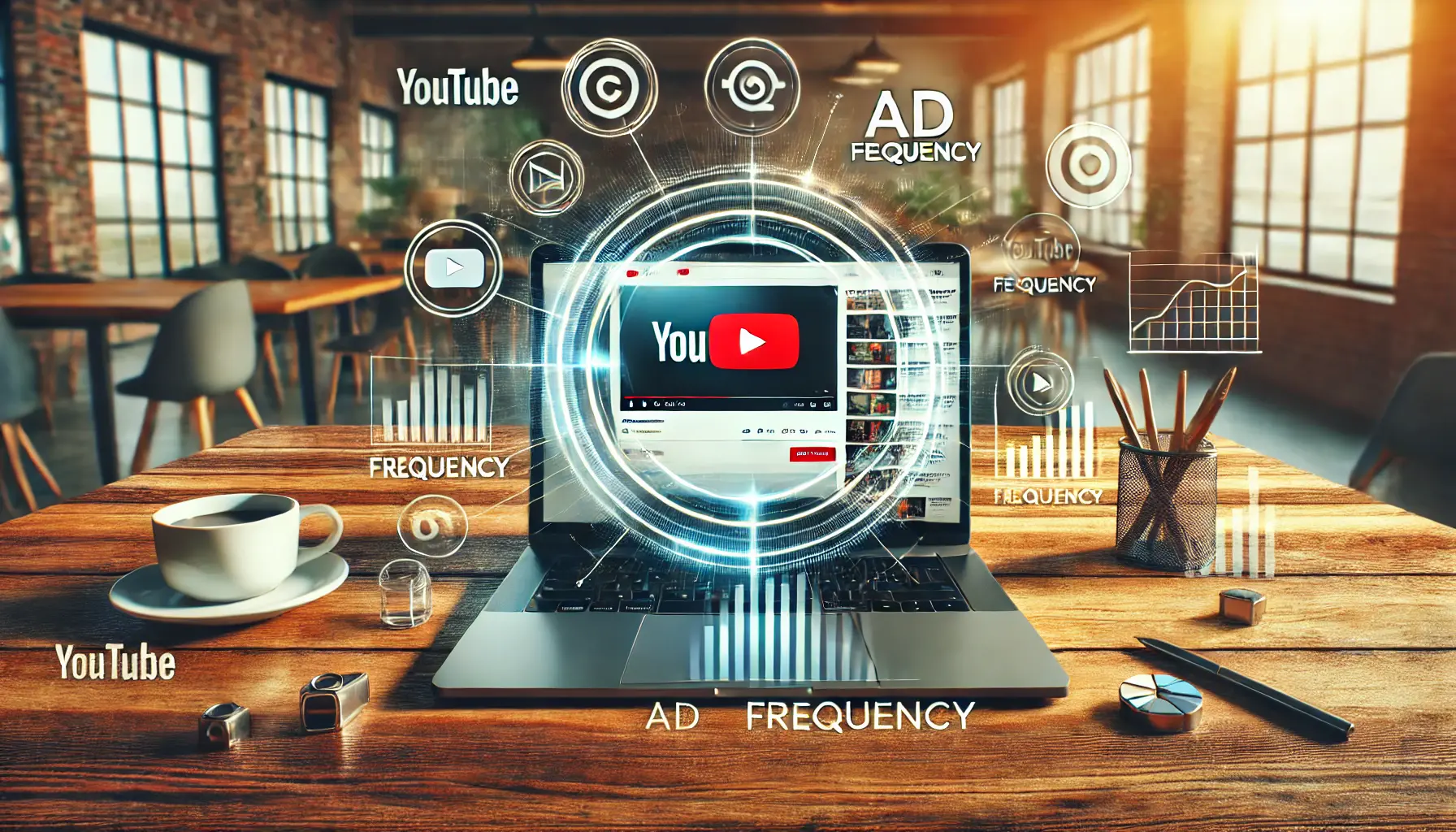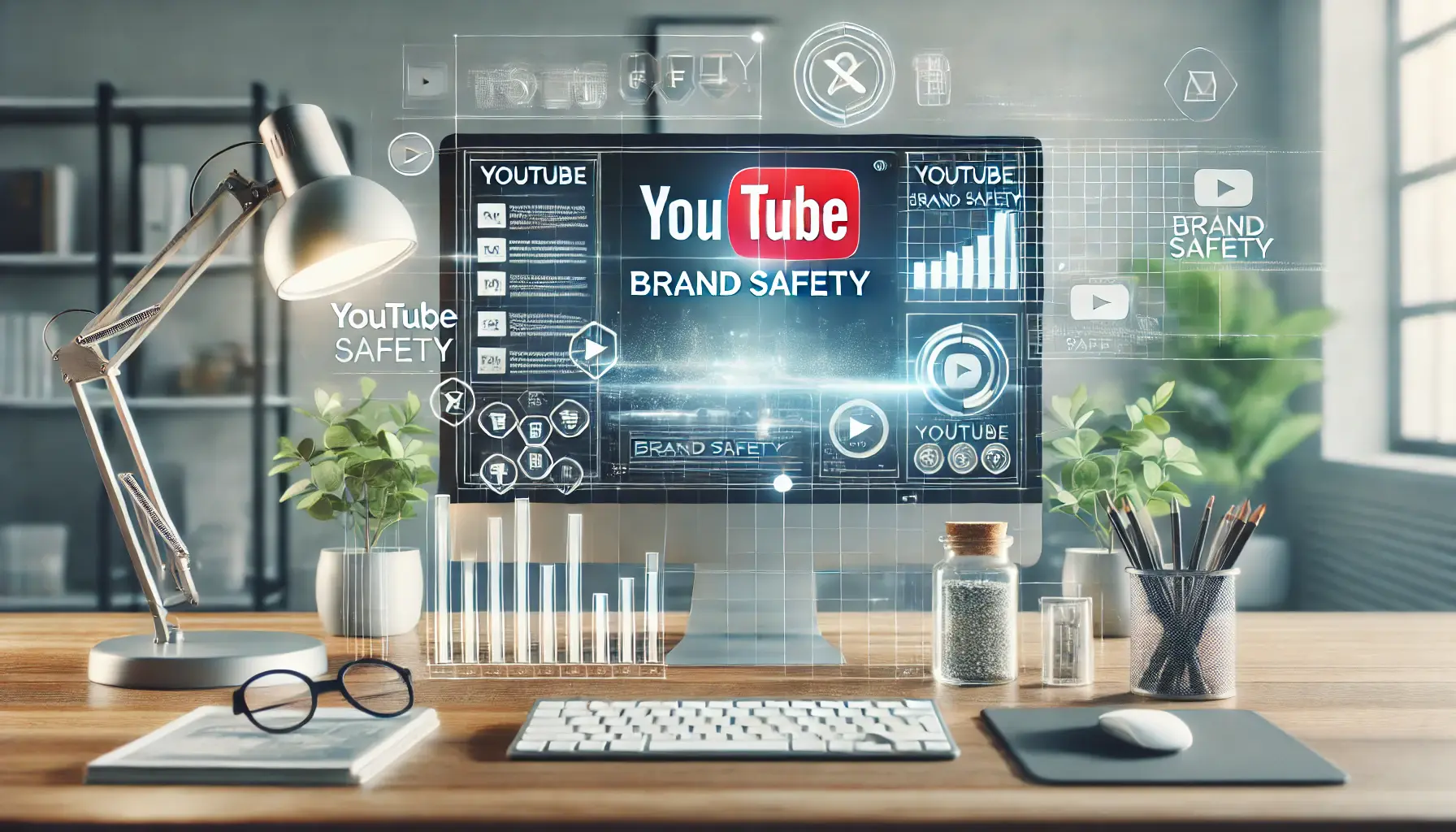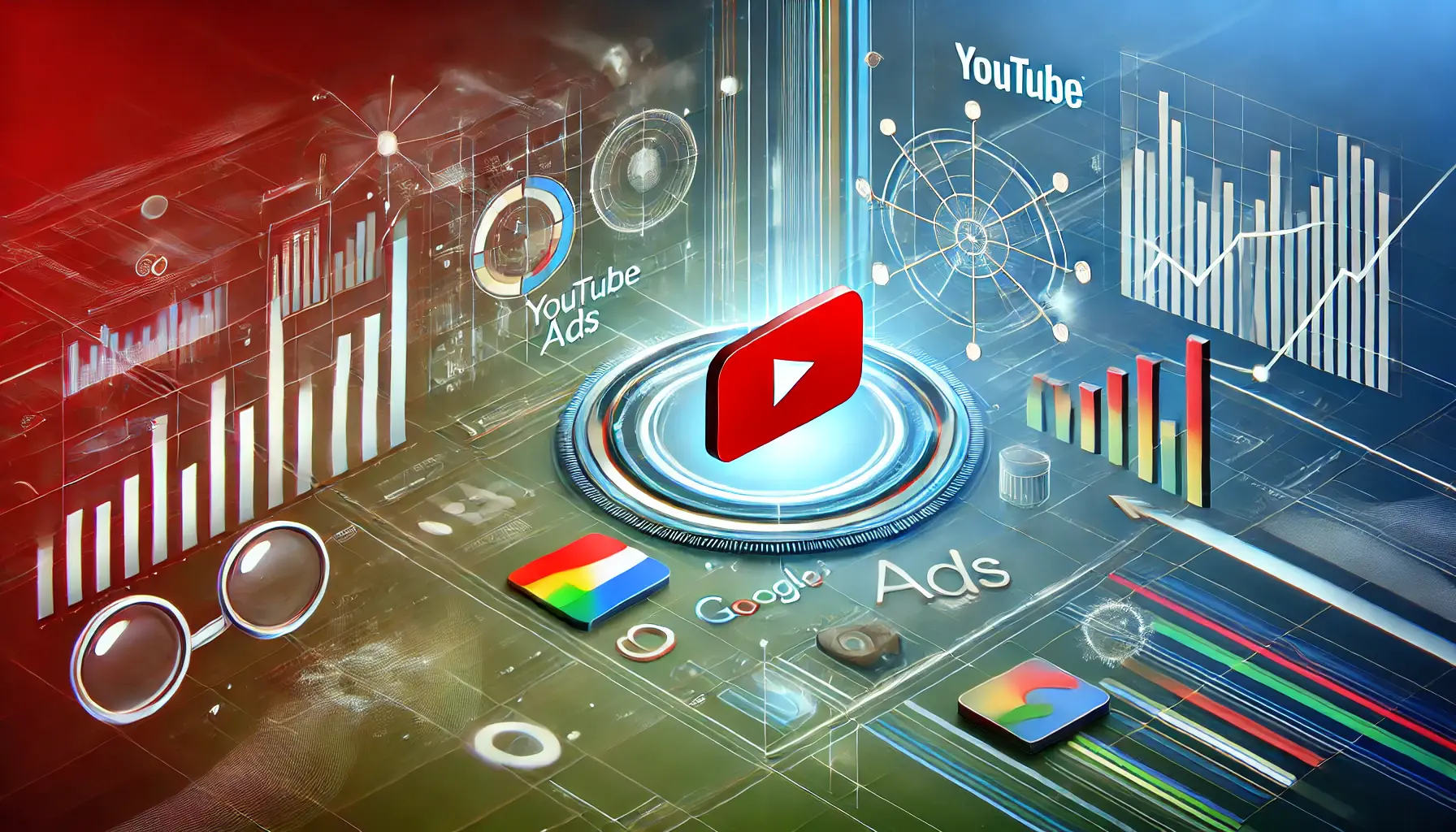In the modern-day world, YouTube is among the most powerful tools that a digital marketer can have, considering how more and more people are consuming videos through different means.
But just because an ad has been posted on YouTube doesn’t guarantee it will see high engagement—just like creating a visually appealing video won’t necessarily drive user actions like clicking, commenting, and taking action.
Understanding several key engagement factors in Q1 2024 can make all the difference in ad performance and ensure your marketing resonates with your target audience.
This article will reveal seven main elements that are essential for boosting engagement in YouTube ads.
From grasping what engagement really means in YouTube advertising to advanced audience targeting strategies, each of these elements is designed to help your ads connect with viewers more effectively.
Let’s start by understanding the foundation of YouTube ad engagement and why it matters.
- Understanding YouTube Ad Engagement
- Best Artistic Elements to Drive Engagement Home
- Techniques of Audience Targeting for Higher Engagement
- Optimizing Ad Placements and Timing
- Analyzing and Adjusting for Better Engagement Results
- How to Master YouTube Engagement for the Best Results
- Engagement: 10 Frequently Asked Questions on YouTube Ads
Understanding YouTube Ad Engagement
Before diving into strategies and methods to enhance engagement, it’s essential to know what YouTube ad engagement actually is and why it’s so important.
Engagement, in the context of YouTube ads, refers to any interaction a viewer initiates with your ad.
This could include clicking a link, watching the video to its fullest, liking, sharing, or commenting.
Each interaction provides valuable insights into how viewers respond to your content, indicating how effectively your ad reaches and resonates with your target audience.
More specifically, engagement includes actions such as views, clicks on call-to-action (CTA) buttons, subscriptions to the advertiser’s channel, or any interaction with overlays.
Engagement serves as a powerful metric because it reveals whether your ad content is compelling enough to drive viewer action.
This metric goes beyond mere impressions, highlighting the effectiveness of your ad in sparking viewer interest.

Image illustrating the analysis of engagement metrics in digital marketing.
Why Engagement Metrics Matter
Engagement metrics matter because they offer deeper insights into ad performance than simple view counts.
High engagement typically indicates that viewers are not only watching your ad but also finding it relevant and interesting enough to take action.
These metrics help advertisers assess how well their ad resonates with the audience and refine strategies for future campaigns.
Additionally, the YouTube algorithm highly values engagement metrics, often rewarding ads that generate high engagement by making them more visible to relevant audiences.
Here are the key engagement metrics you should be tracking for YouTube ads:
- Click-Through Rate (CTR): Measures the percentage of viewers who click on a CTA after watching an ad. This metric indicates how effective the ad is at driving traffic.
- View-Through Rate (VTR): Reflects the percentage of viewers who watch the ad up to a specific point, often used to gauge viewer interest in the video.
- Likes, Shares, and Comments: Viewer interaction with the ad itself provides valuable feedback and indicates the level of viewer engagement.
- Conversion Rate: Measures how many viewers completed an intended action (e.g., buying a product, signing up) after interacting with your ad.
Understanding these metrics will not only give you insight into the effectiveness of your current ad but also help refine your future campaigns.
Each metric reflects different aspects of viewer behavior, allowing you to make data-informed adjustments to improve engagement.
Engagement actions like clicks, views, and interactions are valuable indicators of ad effectiveness. They allow advertisers to understand viewer responses and optimize ad strategies accordingly.

Image illustrating the use of artistic elements to boost engagement in digital marketing.
Best Artistic Elements to Drive Engagement Home
Creative elements in YouTube advertisements act as the backbone of YouTube advertising, forming the foundation of viewer attention and engagement.
Generally speaking, high engagement is often achieved by ads that effectively use visual, auditory, and interactive elements to connect with the audience.
By crafting visually appealing and strategically designed ads, you can drive substantial viewer engagement.
Let’s take a look at some of the most impactful creative elements that make a difference in engagement.
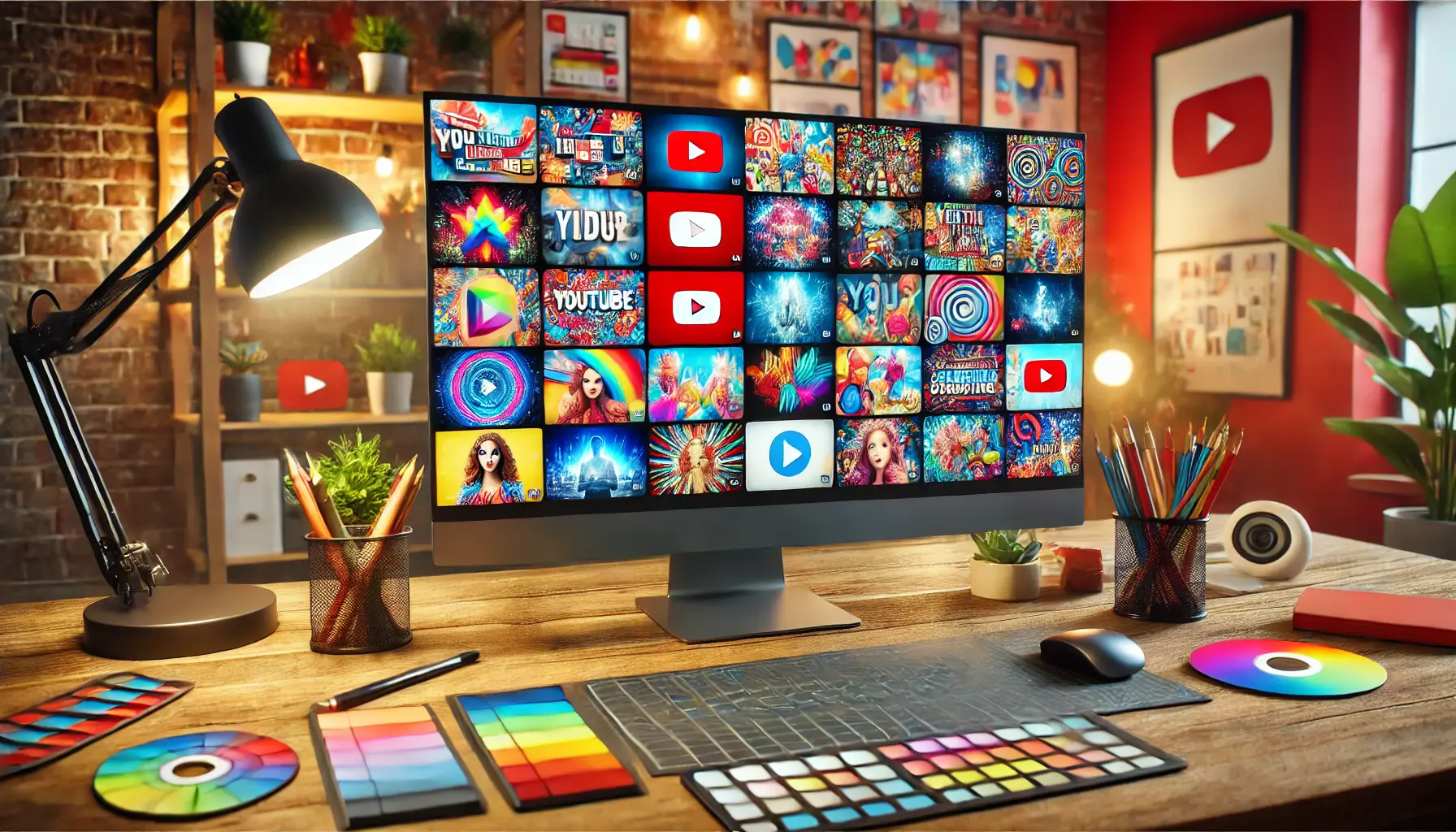
Image showcasing the importance of eye-catching thumbnails and visuals in digital marketing.
Eye-Catching Thumbnails and Visuals
The thumbnail is the very first element that audiences see before viewing the ad, making it crucial for engagement.
A well-designed, eye-catching thumbnail can capture viewers’ attention and encourage clicks.
The best thumbnails typically include:
- High-quality images: Clear, professional images convey credibility and are more likely to drive clicks.
- Bold, concise text: Adding impactful words can give viewers an idea of what the ad is about.
- Contrasting colors: Using colors that stand out from the YouTube interface helps your thumbnail pop and grabs the viewer’s attention.
- Faces or expressions: Human faces, especially those showing strong expressions, are more relatable and tend to attract more attention.
Investing time in designing effective thumbnails can significantly improve click-through rates, which are one of the first indicators of engagement.

Image illustrating the effective use of call-to-action overlays in YouTube advertising.
Effective Employment of Call-to-Action Overlays
A call-to-action (CTA) overlay invites viewers to take direct action with the ad.
These overlays appear at strategic moments in the video, prompting viewers to visit a website, sign up, or learn more.
The most compelling CTAs tend to:
- Appear at key moments: Well-timed CTA overlays ensure they don’t disrupt the ad flow and appear when viewers are most engaged.
- Use action-oriented language: Words like “discover,” “learn more,” or “join now” encourage viewers to click.
- Offer value: Highlighting benefits, such as discounts or exclusive content, increases engagement likelihood.
Thoughtful placement of CTAs helps enable viewers to interact with your ad in a meaningful way, increasing engagement.

Image showcasing the impact of music and sound in driving viewer engagement.
How Music and Sound Drive Engagement
Sound creates an emotional connection between your viewers and your ad.
Music and sound effects can set the tone of an ad and make it more memorable.
When selecting music or sound effects, consider the following:
- Alignment with brand tone: Choose music that reflects your brand’s voice and aligns with the mood of the ad.
- Balance in volume: Ensure the volume is low enough to avoid overpowering the message while complementing the visuals and voiceover effectively.
- Known jingles or sounds: Using sounds associated with your brand can enhance recall and engagement.
Music and sound add emotion to the ad experience, enriching it and increasing the likelihood of viewer engagement.

Image illustrating the impact of video length on viewer engagement.
Video Length and the Role of Engagement
Ad length plays a significant role in engagement, as it determines how long you have to convey your message without losing viewer interest.
YouTube ads range from short six-second bumper ads to longer formats.
Consider the following:
- Keep it concise: Shorter ads generally perform better in terms of completion rates, as they don’t require too much time from viewers.
- Position key messaging early: Key messages should appear within the first few seconds to ensure viewers see them, even if they skip the rest.
- A/B test ad lengths: Testing different ad lengths helps determine what resonates best with your target audience.
Balancing video length with content density helps maintain viewer interest, leading to higher engagement.
Implementing these creative elements in your YouTube ads will capture your audience’s attention and encourage them to engage with your ads.
Focus on visuals, sound, CTA, and optimal length to kick-start your journey to increased audience engagement and meaningful interactions.
Creating visually compelling elements like thumbnails, contrasting colors, and bold text can capture initial viewer interest, boosting ad click-through rates.

Image illustrating audience targeting techniques for enhancing engagement in digital marketing.
Techniques of Audience Targeting for Higher Engagement
Targeting the right audience is a crucial step in creating engaging YouTube ads.
When you target your potential audience effectively, your ads reach people who can relate to your content and are, therefore, more likely to engage with it meaningfully.
YouTube offers powerful targeting options that allow advertisers to reach viewers based on specific demographicsStatistical data relating to the population and specific groups within it, such as age and gender., interests, and behaviors, making it easier to tailor ads to the right audience.
Let’s explore some effective audience targeting techniques to boost engagement in your ads.

Image depicting effective audience segmentation strategies in a marketing team environment.
Segmenting Your Audience Effectively
Audience segmentation involves dividing your audience into smaller groups based on characteristics like demographics, interests, or behaviors.
This approach ensures your ad content is relevant to each group’s preferences, leading to more targeted messaging that is essential for higher engagement.
Key segmentation strategies include:
- Demographic targeting: Reach viewers based on age, gender, income, and other demographic factors, aligning ads more closely with their tastes and preferences.
- Interest targeting: Target viewers who show interest in areas similar to your brand, such as fitness, technology, or travel.
- Behavioral targeting: Show ads to viewers based on their past actions, such as prior searches or watched videos.
Segmentation enables you to convey specific messages that resonate with each group, resulting in stronger engagement.

Image illustrating the application of behavioral targeting strategies in digital marketing.
How to Apply Behavioral Targeting
Behavioral targeting leverages data about viewers’ online activities to display ads that align with their interests.
YouTube analyzes watch history, search queries, and interaction patterns to understand viewers’ preferences.
Behavioral targeting techniques include:
- Retargeting: Show ads to people who have already interacted with your brand, such as those who visited your website or watched one of your videos.
- Custom intent audiences: Find viewers who show purchase intent based on what they’re researching online.
- Affinity audiences: Reach audiences with established interest areas, making your ads more relevant and more likely to engage them.
Behavioral targeting capabilities allow advertisers to make their ads more relevant to viewers, enhancing engagement by aligning with viewers’ needs.

Image illustrating retargeting strategies for re-engaging viewers in marketing.
Retargeting Strategies to Re-Engage Viewers
Retargeting provides another chance to re-engage viewers who previously showed interest in your content but didn’t take further action, such as purchasing a product or subscribing.
Retargeting options for YouTube ads include:
- Video retargeting: Show ads to viewers who have already watched your videos, reminding them of your brand and encouraging further interaction.
- Website retargeting: Target viewers who visited your website but didn’t convert, using YouTube ads to drive traffic back to your site.
- Custom video audiences: Engage viewers who have watched videos similar to yours, capturing their interest based on related content.
Retargeting is a surefire way to boost engagement, reinforcing brand awareness and encouraging viewers to take desired actions they may have missed earlier.

Image illustrating the use of demographic data for precise marketing strategies.
Driving Precision with Demographic Data
Using demographic data allows you to create highly relevant ads for particular groups.
YouTube provides detailed demographic options, including age, gender, parental status, and household income.
Strategies for targeting audiences with demographic data include:
- Age-specific messaging: Craft ads that target specific age groups, such as promoting new technology to younger audiences or highlighting retirement options for older viewers.
- Targeting by gender: Frame ads in a way that appeals to the preferences and interests of different genders.
- Income-based targeting: Design ad copy based on household income; for instance, promoting premium products to higher-income households or budget-friendly options to lower-income groups.
Targeting viewers based on specific demographic traits allows your ads to address their needs, leading to more meaningful engagement and interaction.
By implementing these audience targeting techniques, your YouTube ads will become more relevant, improving engagement rates.
Tailoring ads to viewer characteristics and behaviors makes it easier to connect with audiences, amplifying the impact of your marketing efforts.
Effective audience targeting, such as behavioral or interest-based segmentation, ensures ads reach viewers most likely to engage, enhancing ad relevance and interaction.

Image illustrating strategies for optimizing ad placements and timing in digital marketing.
Optimizing Ad Placements and Timing
Ad placement and timing are crucial factors to achieve maximum engagement with YouTube ads.
Choosing the optimal ad placement and using it at the right time can make a significant difference in how viewers interact with your content.
When ads appear in the right context, they are more likely to capture viewers’ attention and drive meaningful engagement.
Let’s delve into key strategies for ad placements and timing to improve engagement on YouTube.
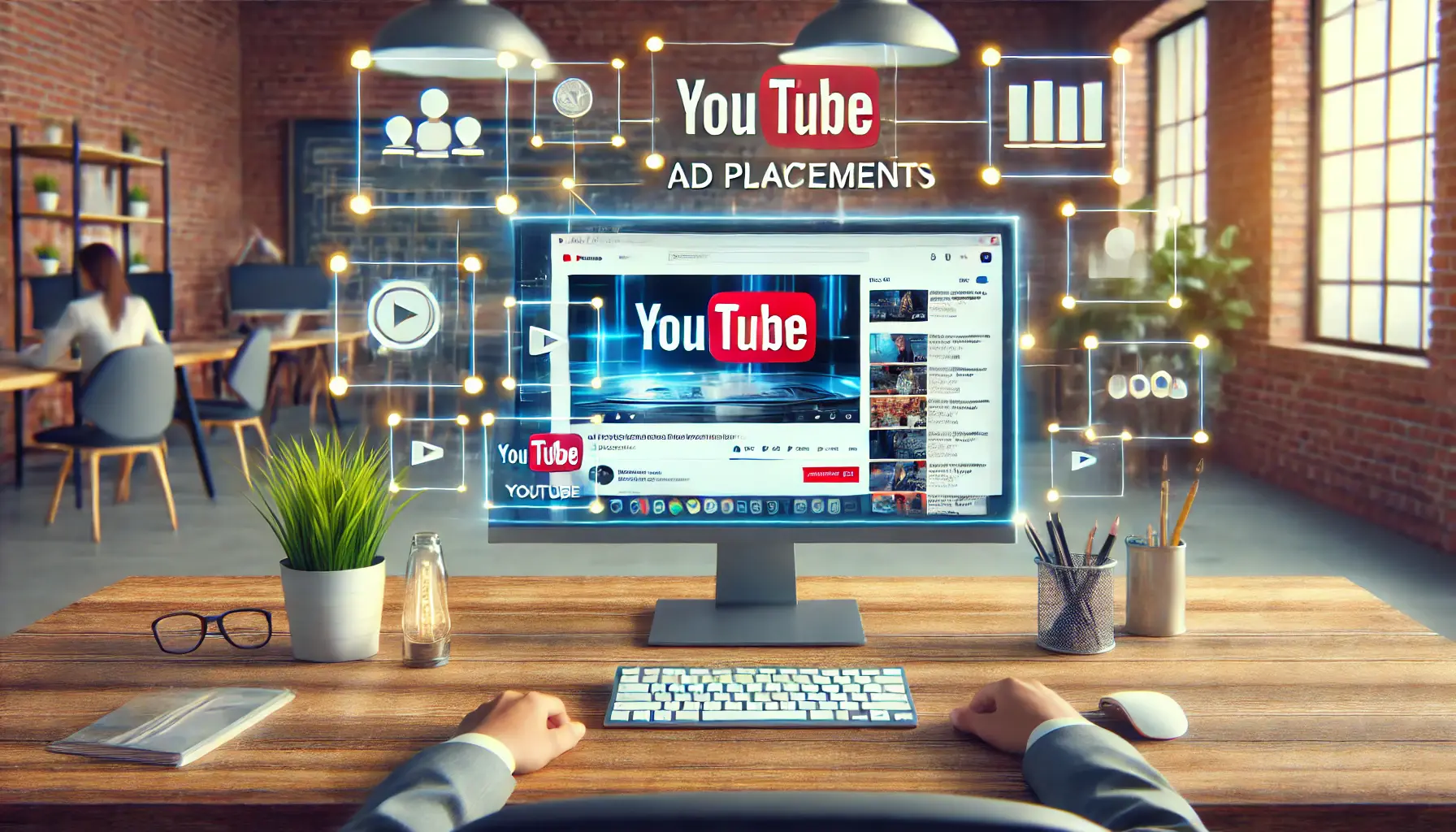
Image illustrating the process of choosing optimal ad placements on YouTube.
Choosing Optimal Ad Placements on YouTube
YouTube offers various ad placement options, each with unique advantages based on campaign goals.
Understanding these options can ensure that your ad appears at the right moment to drive engagement.
Key placement strategies include:
- In-stream ads: These ads play before, during, or after the main video content. Skippable in-stream ads allow viewers to skip after a few seconds, making it essential to capture their attention within the first five seconds. Non-skippable ads are generally shorter and require the viewer to watch the full ad, ensuring complete exposure.
- Discovery ads: These ads appear in YouTube search results and alongside related videos. Discovery ads work best for interest-driven campaigns, reaching viewers actively searching for similar content.
- Bumper ads: Bumper ads are six-second, non-skippable ads that play before the main video. Short and impactful, they are effective for brand and message recall.
Choosing the best placement for your ad allows it to be seen in the most favorable way, enhancing the likelihood of engaging viewers effectively.
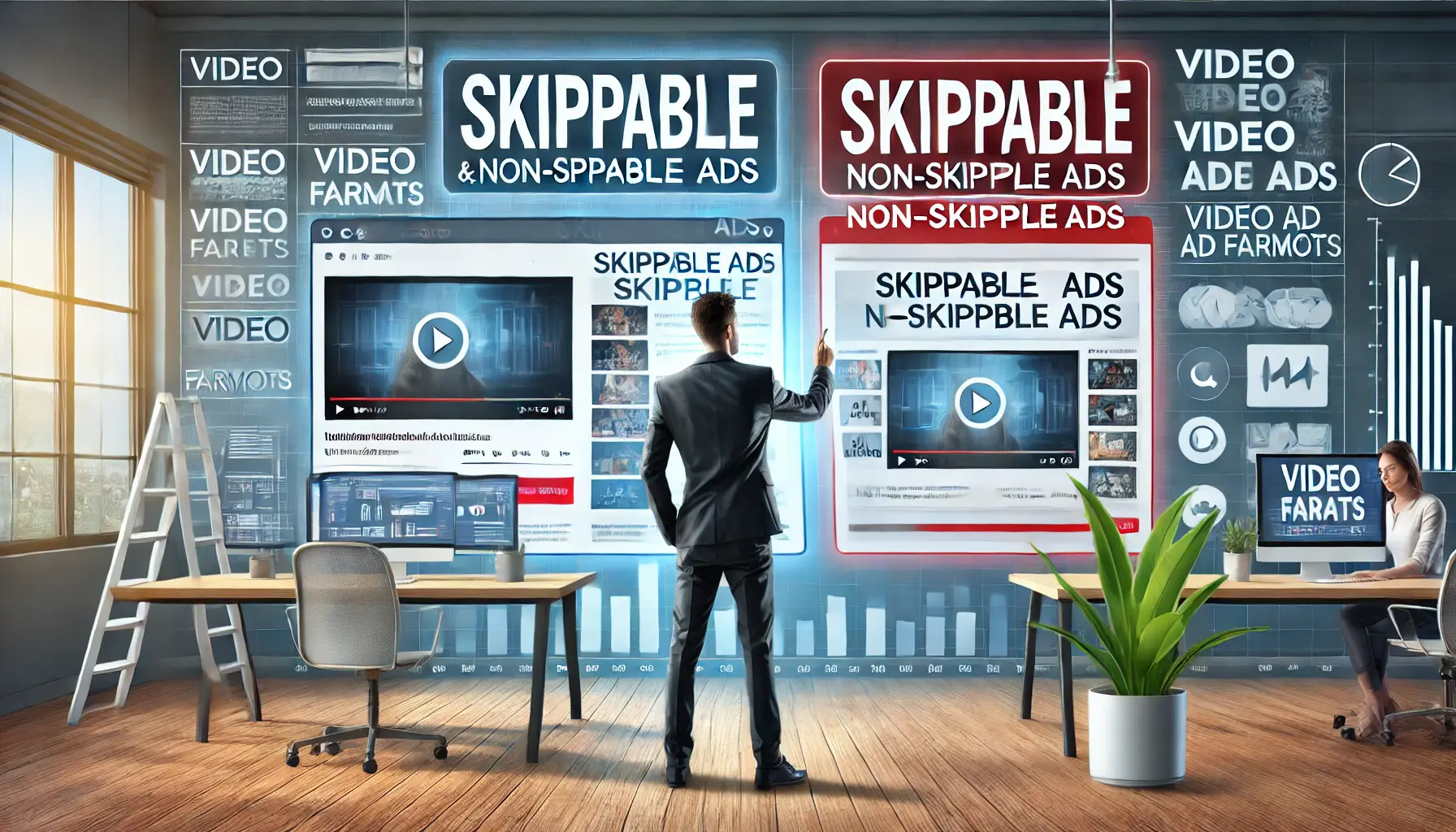
Image illustrating the decision-making process for using skippable versus non-skippable ads.
When to Use Skippable vs. Non-Skippable Ads
The choice between skippable and non-skippable ads depends on your ad content and campaign objectives.
Skippable ads give viewers flexibility but require a strong hook in the first few seconds to retain attention.
Non-skippable ads guarantee full views but may lead to higher skip rates if they lack engagement.
Consider the following:
- Skippable ads for storytelling: Skippable ads are ideal for longer content that requires more than a few seconds to convey the message effectively.
- Non-skippable ads for concise messages: Non-skippable ads are best suited for brief, impactful messages that don’t require extensive content to engage viewers.
- Use A/B testing: Testing both ad formats can reveal which works best for your audience.
Balancing skippable and non-skippable ads in your campaign can help maximize engagement by meeting various viewer preferences and adapting to different ad content needs.

Image illustrating the importance of timing for maximizing engagement in marketing campaigns.
Best Timing for Maximum Engagement
Timing plays an essential role in YouTube ad engagement.
Ads should be scheduled to appear when viewers are most active and responsive.
Consider these timing strategies:
- Post during peak viewing hours: Research when your target audience is most active on YouTube to increase the likelihood of engagement.
- Leverage daily and weekly trends: Viewer activity can vary depending on the day and time of the week, with evenings and weekends often being peak times.
- Utilize ad scheduling: Use YouTube’s ad scheduling feature to display ads during specific hours, ensuring they appear when your audience is most engaged.
Optimizing ad timing helps ensure your content appears during high-engagement periods, enhancing ad performance and viewer interaction.

Image illustrating the use of frequency capping to manage viewer attention in digital marketing.
Frequency Capping to Retain Viewer Attention
Frequency capping is a strategy to control how often the same viewer sees your ad within a given timeframe.
While repeated exposure can reinforce your message, excessive repetition may lead to ad fatigueThe phenomenon where viewers become bored or annoyed with seeing the same ad repeatedly. and reduced engagement.
Tips for frequency cappingA technique to limit the number of times an ad is shown to the same viewer to avoid ad fatigue. include:
- Limit ad impressions: Set a maximum number of times a viewer should see your ad to prevent over-saturation.
- Adapt based on campaign goals: Higher frequency may be acceptable for awareness campaigns, while engagement-focused campaigns should aim for a balanced frequency.
- Monitor and adjust: Regularly analyze engagement metrics to optimize the frequency cap for your audience.
Implementing frequency capping helps maintain viewer interest and ensures your ads remain effective without overwhelming the audience.
By optimizing ad placement, timing, and frequency capping, you can achieve maximum engagement on YouTube ads.
Tuning these elements to align with viewer behavior maximizes opportunities for meaningful interaction and ensures your ad performs effectively.
Choosing the right ad placement—such as in-stream or bumper ads—and scheduling at optimal times can significantly improve visibility and engagement rates.

Image illustrating the process of analyzing and adjusting strategies for improved engagement results.
Analyzing and Adjusting for Better Engagement Results
The key to successful analysis lies in understanding and optimizing YouTube performance data on engagement outcomes.
Your strategy can be refined through periodic reviews of key metrics based on data insights, enabling continuous improvements in engagement rates for better results.
Let’s explore the most effective ways to analyze and adjust your YouTube ads for improved engagement.

Image illustrating the importance of tracking key metrics for engagement effectiveness.
Key Metrics to Track Engagement Effectiveness
Tracking the right metrics helps you understand how well your ads resonate with viewers.
Each metric provides valuable insights into different aspects of viewer behavior, allowing you to make data-driven decisions.
Important metrics to track include:
- Click-Through Rate (CTR): Reflects the percentage of viewers who clicked on the call-to-action after viewing the ad. A higher CTR indicates that the ad creative is engaging enough to drive action.
- View-Through Rate (VTR): Shows the percentage of viewers who watched the ad to a certain point, often used to estimate interest and retention levels.
- Engagement Actions (likes, shares, comments): Viewer interactions with the ad provide insights into how engaging the content is and how audiences respond to it.
- Conversion Rate: Measures the number of viewers who completed a desired action, such as signing up or making a purchase, after viewing the ad.
Regularly tracking these metrics helps you assess ad efficiency and pinpoint areas for improvement.

Image illustrating the process of A/B testing to enhance engagement in marketing strategies.
A/B Testing to Boost Engagement
A/B testing, or split testing, involves running multiple versions of an ad to determine which performs best.
Testing different elements allows you to optimize ads for better engagement by identifying what resonates with the audience.
Key A/B testingA method of comparing two versions of an ad to see which performs better. tactics include:
- Test ad copy: Experiment with different messages or calls-to-action to see which phrasing drives higher engagement.
- Try different visuals: Test various thumbnail designs, colors, and video elements to determine the combination that captures the most attention.
- Adjust ad length: Test different video lengths to find out whether shorter or longer ads engage your audience more effectively.
A/B testing helps refine your ads based on audience preferences, maximizing engagement potential.

Image illustrating the process of interpreting viewer feedback to enhance marketing strategies.
Interpreting Viewer Feedback and Comments
Viewer feedback, including comments and reactions, provides direct insights into how audiences perceive your ad.
Reviewing feedback can reveal common viewer sentiments, areas for improvement, and additional content ideas.
Tips for leveraging viewer feedback include:
- Analyze sentiment: Track positive or negative trends in comments to understand the general viewer sentiment.
- Identify recurring themes: Note common questions, critiques, or compliments, as these often indicate how well the ad resonates with viewers.
- Leverage feedback to guide adjustments: Use feedback to make changes that align your ads more closely with audience preferences.
Incorporating viewer feedback into ad development can help create content that aligns with audience expectations, making it more engaging.

Image illustrating the collaborative effort in adjusting ad campaigns based on data insights.
Adjusting Ad Campaigns Based on Data Insights
Adjusting your ad campaigns based on data insights is essential for continued engagement improvement.
Data-driven tweaks ensure your strategy stays aligned with audience preferences.
Steps to optimize your campaign include:
- Refine targeting parameters: Adjust audience targeting to reach viewers who are more likely to engage, based on performance data.
- Optimize ad frequency: Use frequency data to find the optimal number of ad exposures that maximize engagement without causing fatigue.
- Modify placement and timing: Evaluate ad placements and timing to ensure ads appear in the right context for higher engagement.
Regularly analyzing and adjusting your YouTube ads based on data insights helps maintain high engagement and improves campaign performance.
Applying these analysis and adjustment strategies will ensure that your YouTube ads are optimized for engagement.
Tracking metrics, testing ad elements, incorporating feedback, and making data-driven changes will help you connect more effectively with your audience and achieve better results.
Continual analysis of engagement metrics and adjusting ad strategies based on data ensures ads remain effective and engaging for viewers.

Image illustrating strategies for mastering YouTube engagement.
How to Master YouTube Engagement for the Best Results
One thing is very clear: the foundation of effective YouTube advertising is engagement.
To truly connect with your audience and maximize engagement, you need a comprehensive approach that includes creative elements, precise audience targeting, thoughtful ad placements, optimal timing, and regular performance analysis.
Each of these factors greatly contributes to the success of your YouTube ads by creating resonance with your audience and fostering positive engagement.

Image illustrating the summary of key engagement tactics in digital marketing.
Summary of Key Engagement Tactics
In this guide, we examined several key tactics aimed at enhancing YouTube ad engagement.
Here’s a quick summary of these steps that can make a noticeable difference in ad performance:
- Creative Elements: Thumbnails, visuals, sound, CTAs, and video length are major elements that capture viewer attention and sustain interest.
- Target Audience Segments: Segmenting your audience with proper targeting and behavioral insights ensures ads reach viewers who are more likely to engage with your content.
- Placement and Scheduling Optimization: Choosing appropriate ad placements and scheduling them strategically increases visibility and relevance, helping ads reach the right audience at the right time.
- Monitor Performance Metrics: Key metrics like CTR, VTR, engagement actions, and conversion rate provide insights into ad effectiveness and areas for improvement.
- Data-Driven Adjustments: Using feedback, A/B testing, and version variations enables continuous improvement in ad engagement.

Image illustrating the efforts to achieve sustainable engagement on YouTube.
Achieving Sustainable Engagement on YouTube
Building sustainable engagement on YouTube requires an approach that adapts to audience preferences and platform trends.
By periodically analyzing and adjusting your strategy, you ensure your ads remain relevant and effective over time.
Remember, high engagement comes from understanding your audience’s needs and creating ads that speak to them.
This can make the difference between a passive viewer and an engaged customer.
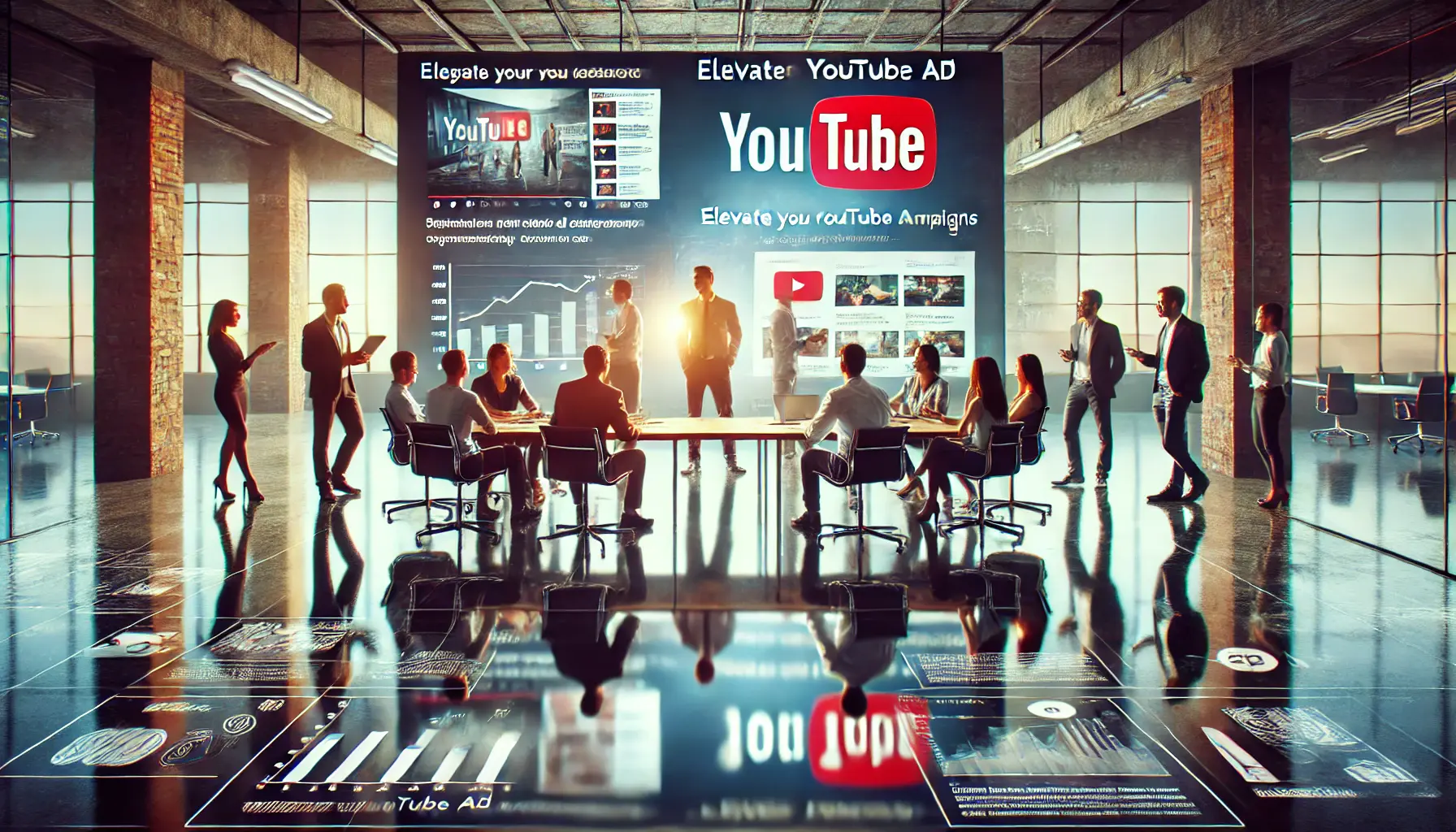
Image illustrating the collaborative effort to enhance YouTube ad strategies.
Final Thoughts: Elevating Your YouTube Ad Strategy
Mastering YouTube ad engagement is a dynamic process that involves creativity, precision, and continuous learning.
By following the strategies outlined here, you can establish a strong foundation for effective YouTube advertising that resonates with viewers and drives results.
Keep testing, iterating, and adjusting, as the platform constantly evolves.
This approach will keep your ads relevant and engaging.
With these insights, you’re well-positioned to maximize engagement, ensuring that your YouTube ads truly work for you.
Stay focused, listen to your audience, and continually optimize for long-term success in YouTube advertising.
A cohesive strategy involving creative elements, precise targeting, and regular performance analysis is essential to mastering engagement in YouTube ads.
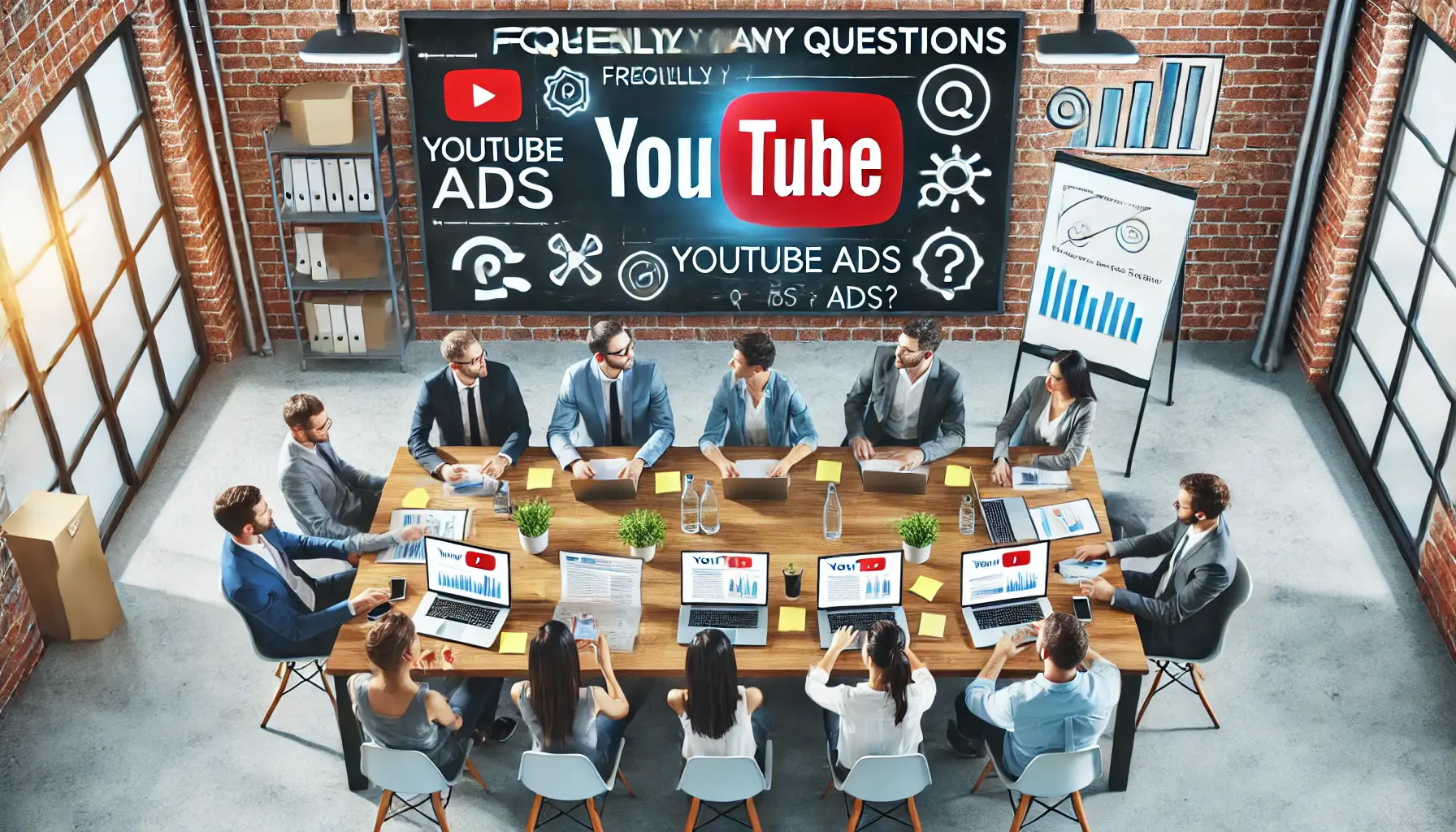
Image illustrating a collaborative session on YouTube ad engagement questions.
Your campaigns can be managed by an agency specialized in Google Ads, check out our service page.
Engagement: 10 Frequently Asked Questions on YouTube Ads
The following answers address some frequently asked questions about increasing ad engagement on YouTube.
These insights can help you leverage this powerful video platform to enhance your advertising strategy, complemented by consistent analysis and adjustments of performance metrics to boost viewer interaction and engagement.
Apply A/B testing by experimenting with different creative elements, such as visuals, messaging, and video length.
Testing these variations reveals what resonates best with your audience, optimizing ads for higher engagement.
Feedback from viewers provides insights into an ad’s resonance.
Reactions and comments highlight what may need improvement, helping you tailor ads to suit audience preferences and boost engagement.
Key metrics include Click-Through Rate (CTRClick-Through Rate, measuring the percentage of viewers who clicked on a call-to-action after viewing the ad.), View-Through Rate (VTRView-Through Rate, reflecting the percentage of viewers who watched the ad up to a certain point.), engagement actions (likes, shares, comments), and conversion rate.
These metrics reveal insights into ad performance and viewer interaction.
Skippable ads are ideal for longer, storytelling content, while shorter messages are best for non-skippable ads.
Consider the ad’s length and messaging to select the format most suited to your engagement goals.
Frequency capping limits how often an ad is shown to the same viewer, helping to prevent ad fatigue.
Balanced exposure levels maintain viewer interest without overwhelming them, increasing overall engagement rates.
Strategically placed ads ensure they appear where most relevant, increasing the likelihood of viewer engagement.
In-stream, discovery, or bumper ads can be chosen based on campaign goals and engagement strategy.
Ad performance relates closely to length, as shorter ads retain viewer interest, while longer ads enable deeper storytelling.
Testing various lengths helps determine what resonates best with your audience.


